COVID-19 can possibly spread through airborne aerosols, definitely via people without symptoms, WHO says
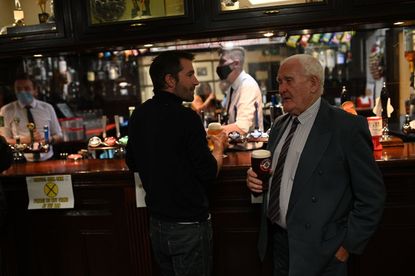

The World Health Organization updated its findings Thursday on how COVID-19 is transmitted, and there are two important changes. First, the WHO acknowledged growing evidence the new coronavirus may spread through aerosols, tiny droplets of saliva that linger in the air for hours, especially in enclosed and poorly ventilated spaces. The second change involved the risk of transmission by people who don't have symptoms. Both issues have broad implications for how to contain the disease.
The WHO maintains that the main route of transmission involves infected people projecting saliva droplets into the eyes, mouth, or nose of people in close proximity, via coughing, sneezing, talking, or singing. The agency also said spread through infected surfaces, or formite transmission, is "likely" though not yet proven. Urine and feces have been shown to contain viable amount of the new coronavirus, too.
The virus can be spread by people who don't have COVID-19 symptoms, the WHO said, but there is an "important" distinction between people who never develop symptoms (asymptomatic) and those who have yet to develop symptoms (presymptomatic), and "the extent of truly asymptomatic infection in the community remains unknown." As a practical matter, Michael Barbaro noted on Thursday's The Daily podcast, the WHO is "making distinctions that don't mean all that much to people who are trying to decide whether to go to work, whether to go to a restaurant, whether to see friends."
Subscribe to The Week
Escape your echo chamber. Get the facts behind the news, plus analysis from multiple perspectives.

Sign up for The Week's Free Newsletters
From our morning news briefing to a weekly Good News Newsletter, get the best of The Week delivered directly to your inbox.
From our morning news briefing to a weekly Good News Newsletter, get the best of The Week delivered directly to your inbox.
The WHO has long dismissed aerosols as a means of transmission except during certain medical procedures, but it now says airborne spread "cannot be ruled out." There's evidence aerosols may have been responsible for "outbreaks of COVID-19 reported in some closed settings, such as restaurants, nightclubs, places of worship, or places of work where people may be shouting, talking, or singing," the WHO said, though larger droplets or contaminated surfaces might also have caused those outbreaks.
"Outdoors, any virus in small or large droplets may be diluted too quickly in the air to pose a risk," The New York Times reports. "But even a small possibility of airborne spread indoors has enormous implications for how people should protect themselves." The new brief mostly shows the WHO's experts interpret the data on aerosols differently, Oxford University's Dr. Trish Greenhalgh tells the Times. "The push-pull of that committee is palpable," she said. "As everyone knows, if you ask a committee to design a horse, you get a camel."
Create an account with the same email registered to your subscription to unlock access.
Sign up for Today's Best Articles in your inbox
A free daily email with the biggest news stories of the day – and the best features from TheWeek.com
Peter has worked as a news and culture writer and editor at The Week since the site's launch in 2008. He covers politics, world affairs, religion and cultural currents. His journalism career began as a copy editor at a financial newswire and has included editorial positions at The New York Times Magazine, Facts on File, and Oregon State University.
-
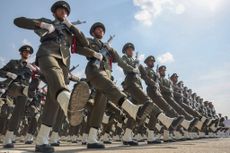 'A direct, protracted war with Israel is not something Iran is equipped to fight'
'A direct, protracted war with Israel is not something Iran is equipped to fight'Instant Opinion Opinion, comment and editorials of the day
By Harold Maass, The Week US Published
-
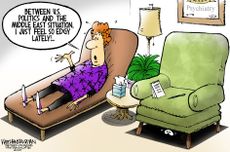 Today's political cartoons - April 17, 2024
Today's political cartoons - April 17, 2024Cartoons Wednesday's cartoons - political anxiety, jury sorting hat, and more
By The Week US Published
-
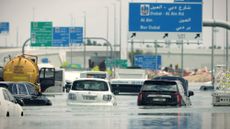 Arid Gulf states hit with year's worth of rain
Arid Gulf states hit with year's worth of rainSpeed Read The historic flooding in Dubai is tied to climate change
By Peter Weber, The Week US Published
-
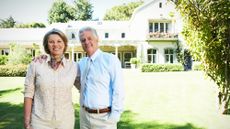 Empty-nest boomers aren't selling their big homes
Empty-nest boomers aren't selling their big homesSpeed Read Most Americans 60 and older do not intend to move, according to a recent survey
By Peter Weber, The Week US Published
-
 Brazil accuses Musk of 'disinformation campaign'
Brazil accuses Musk of 'disinformation campaign'Speed Read A Brazilian Supreme Court judge has opened an inquiry into Elon Musk and X
By Rafi Schwartz, The Week US Published
-
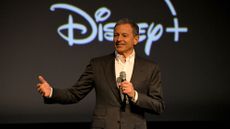 Disney board fends off Peltz infiltration bid
Disney board fends off Peltz infiltration bidSpeed Read Disney CEO Bob Iger has defeated activist investor Nelson Peltz in a contentious proxy battle
By Rafi Schwartz, The Week US Published
-
 Disney and DeSantis reach detente
Disney and DeSantis reach detenteSpeed Read The Florida governor and Disney settle a yearslong litigation over control of the tourism district
By Peter Weber, The Week US Published
-
 Visa and Mastercard agree to lower swipe fees
Visa and Mastercard agree to lower swipe feesSpeed Read The companies will cap the fees they charge businesses when customers use their credit cards
By Peter Weber, The Week US Published
-
 Reddit IPO values social media site at $6.4 billion
Reddit IPO values social media site at $6.4 billionSpeed Read The company makes its public debut on the New York Stock Exchange
By Peter Weber, The Week US Published
-
 Housing costs: the root of US economic malaise?
Housing costs: the root of US economic malaise?speed read Many voters are troubled by the housing affordability crisis
By Peter Weber, The Week US Published
-
 Feds cap credit card late fees at $8
Feds cap credit card late fees at $8speed read The Consumer Financial Protection Bureau finalized a rule to save households an estimated $10 billion a year
By Peter Weber, The Week US Published